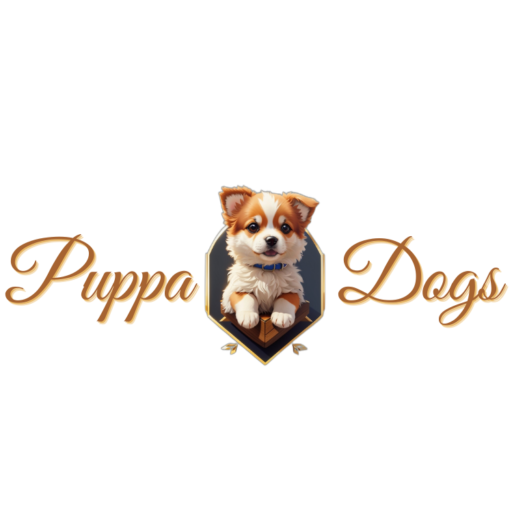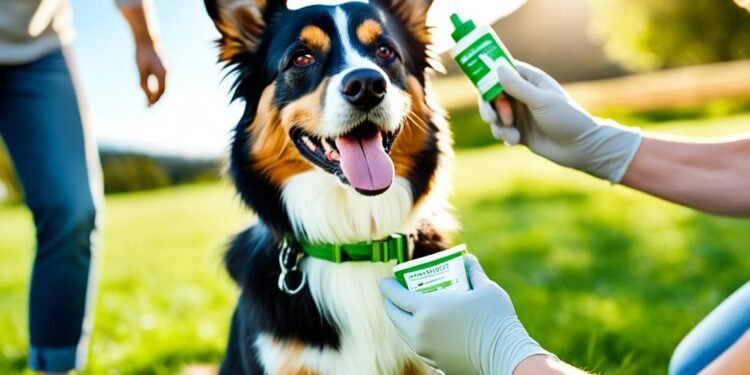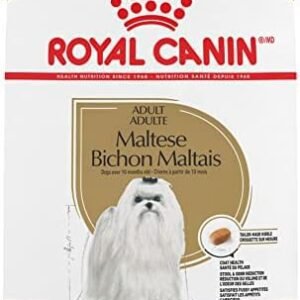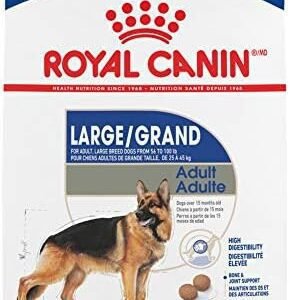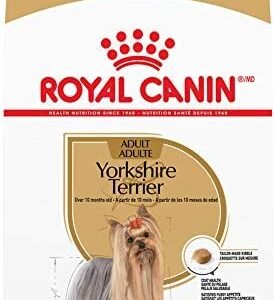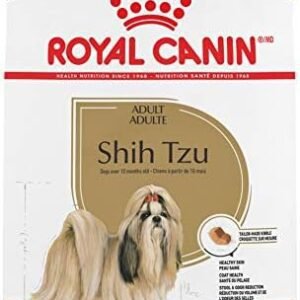Dogs often face pyoderma due to ectoparasitism and autoimmune diseases. For pet owners, knowing the best treatments is crucial. Mupirocin ointment has become a key solution for bacterial skin infections like pyoderma in dogs. As a topical antibiotic, it effectively relieves symptoms and accelerates healing, marking it a preferred choice in veterinary medicine.
This guide delves into the aspects of mupirocin treatment for dogs. We’ll discuss its uses, benefits, and application guidelines. Recognizing how this ointment works helps pet owners in preserving their dog’s skin health. Moreover, it aids in managing ongoing bacterial skin conditions.
Key Takeaways
- Mupirocin ointment is effective against common bacterial infections in dogs, including pyoderma.
- It provides fast relief from itching, redness, and inflammation.
- Regular application can help prevent future infections.
- The ointment is generally safe, with minimal side effects.
- Consultation with a veterinarian is recommended for optimal use.
- Proper hygiene and cleaning of the affected area enhance treatment effectiveness.
Table of Contents
Understanding Mupirocin
Mupirocin is a broad-spectrum antibiotic effective for canines, derived from Pseudomonas fluorescens fermentation. This medicinal compound is crucial in mupirocin use in veterinary medicine for treating bacterial skin infections in dogs.
With 20 mg of mupirocin per gram, the ointment targets both gram-positive and gram-negative bacteria. It proves effective against specific bacteria like Staphylococcus aureus, Staphylococcus intermedius, and Escherichia coli. Its FDA approval marks it as a trusted veterinarian choice.
The ointment works by halting bacterial protein synthesis, binding to a key bacterial enzyme. This action makes it potent even against methicillin-resistant strains of Staphylococcus aureus.
Effective use of mupirocin ointment involves covering the infection thoroughly. Available in several sizes, guidelines recommend not exceeding a 30-day treatment, with applications twice daily.
Monitoring pets for side effects is crucial, though serious adverse reactions are rare. Minor skin irritation may occur. Following the 10-minute contact time guideline is essential for treatment efficacy.
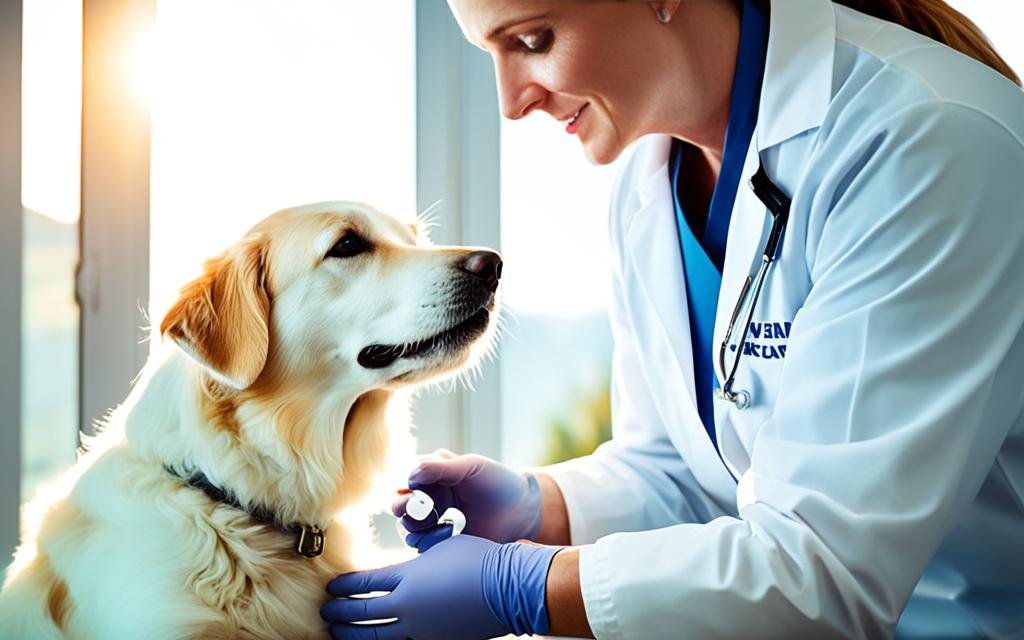
What is Mupirocin Ointment for Dogs?
Mupirocin ointment is a pet skin care treatment used to manage bacterial skin infections in dogs. It effectively targets conditions like superficial pyoderma. The ointment fights against bacteria such as Staphylococcus aureus and Staphylococcus intermedius. Each gram of the medication contains 20 mg of mupirocin.
The formula is based on a water-washable polyethylene glycol, making it easy to apply. Administering this ointment should always be under veterinary supervision. This is critical to ensure proper dosing and safety. Side effects are uncommon, but any sign of skin irritation demands a vet’s immediate attention.
Generally, the ointment is applied twice daily. It’s crucial, however, not to use it for more than 30 days. Special caution is advised with deep lesions. This is to avoid nephrotoxicity risks from the absorbing polyethylene glycol.
In pet care, mupirocin ointment is invaluable for its antibacterial benefits. It plays a significant role in ensuring pets’ comfort and health during recovery. For its use in your dog’s specific skin condition, consultation with a veterinarian is always recommended.
Benefits of Mupirocin for Canine Skin Care
Mupirocin ointment is crucial for improving dogs’ skin health, especially against bacterial infections. This ointment is approved by the FDA for treating conditions caused by bacteria like Staphylococcus aureus and Staphylococcus pseudintermedius. It quickly eases symptoms such as redness and irritation. Hence, it’s a popular choice for treating dog skin rashes.
Mupirocin is not only for treating infections. It also benefits dogs with minor cuts and wounds, as it prevents secondary infections. This minimizes recovery complications, promoting faster healing.
Using mupirocin correctly is essential for its effectiveness. It should be applied twice daily to keep medication levels steady. It’s important to stop pets from licking the treated area for 20 to 30 minutes post-application. This ensures the ointment works properly.
In summary, mupirocin ointment is invaluable for treating canine skin issues. Its ability to combat bacterial infections and prevent future ones underscores its usefulness. For those seeking reliable dog skin care options, mupirocin is a top choice.
How Mupirocin Works Against Bacterial Infections
Mupirocin is recognized as a top choice for treating bacterial infections in dogs. It operates by halting the bacterial protein creation process. This effect is achieved through its binding to the isoleucyl-tRNA synthetase enzyme. This enzyme is crucial for bacteria to grow and multiply.
This antibiotic is particularly potent against many gram-positive and some gram-negative bacteria. These include bacteria like Staphylococcus pseudintermedius, which often causes skin infections in dogs. A notable study involving 581 S. pseudintermedius isolates showed minimal resistance to mupirocin. Only one isolate displayed resistance, highlighting its strong effectiveness.
Mupirocin also effectively combats bacteria resistant to other antibiotics, such as MRSA. While resistance can occasionally develop, especially in hospitals, it remains uncommon for high-level resistance to occur. Its antimicrobial properties are highly effective, especially in treating localized infections.
What sets mupirocin apart is its approval as the only aminoacyl-tRNA synthetase (aaRS) inhibitor by the FDA. This points to its targeted approach against harmful bacteria. The specificity of mupirocin limits side effects typically seen with more general antibiotics.
Mupirocin Ointment for Dogs: Indications and Uses
Mupirocin ointment is crucial in treating dog skin issues caused by bacteria. It’s particularly effective against superficial pyoderma, usually from Staphylococcus strains. Such infections include hot spots and interdigital cysts, troublesome yet treatable with this ointment.
To achieve the best healing, apply the ointment twice daily. Veterinary versions usually have a 2% mupirocin concentration. They come in 15 g or 22 g sizes, depending on the treatment needs.
However, using mupirocin necessitates caution. It is not for dogs allergic to it or its ingredients. Side effects like skin irritation are possible but infrequent. Overuse might lead to resistance or superinfections.
| Indications | Details |
|---|---|
| Targeted Conditions | Superficial pyoderma, hot spots, interdigital cysts |
| Active Ingredient | Mupirocin (2% concentration) |
| Application Frequency | Twice daily |
| Available Sizes | 15 g, 22 g tubes |
| Potential Side Effects | Skin irritation, rare allergic reactions |
| Duration of Use | No longer than 30 days |
| Cautions | Do not use in dogs with known hypersensitivity; monitor for side effects |
Guide to Administering Mupirocin Ointment
When you’re treating dogs with mupirocin ointment, you must follow the guidelines closely. This ensures the treatment works as intended. We’ll cover the correct dosages and how to apply the ointment for the best results.
Dosage Chart
| Condition | Dosage | Application Frequency |
|---|---|---|
| Secondarily infected traumatic skin lesions | Apply ointment as needed | Three times a day for 10 days |
| Impetigo | Apply ointment as needed | Three times a day |
| General use for adults and children over 2 months | Refer to healthcare guidance | As directed |
Frequency of Application
For mupirocin treatment in dogs to work, consistency is important. The usual approach involves applying the cream three times a day. Sticking to this routine can greatly speed up recovery.
Directions for Use
Start by cleaning the affected skin area completely. Next, apply a healthy layer of mupirocin ointment. The typical dose should look like a quarter-inch strip.
If needed, you can cover it with a dressing to keep the dog from interfering with the treatment. This step makes sure the medicine is absorbed well, which boosts its effectiveness.
Potential Side Effects and Precautions
Mupirocin ointment is often well-received by dogs, but awareness of possible side effects is crucial. It enables owners to care for their pets effectively and reduce health hazards.
Adverse Reactions to Monitor
Although severe allergies to mupirocin are uncommon, mild skin reactions may occur. Symptoms like redness, swelling, or discomfort need immediate stopping of the ointment and consulting a vet. Other possible side effects include:
- Mild burning or stinging sensation at the application site.
- Redness or dryness of the skin.
- Less common reactions such as blistering, crusting, or swelling of facial features.
- Severe diarrhea that does not resolve within two days.
- Abdominal pain or blood and mucus in stools, which are rare but require urgent attention.
Close monitoring of dogs during treatment is advised. Reporting adverse reactions to vets enhances our comprehension of mupirocin’s impacts.
Safety in Pregnant or Lactating Dogs
The use of mupirocin in pregnant or nursing dogs is not well studied. Therefore, it’s essential to weigh the pros and cons cautiously. Discussing with a vet is vital before commencing treatment. Despite the lack of data on its effects in such conditions, being cautious is advisable.
Responsible use of mupirocin is key to maximizing its advantages while minimizing negative outcomes. It’s crucial to monitor your pet and seek veterinary advice to safeguard its health and wellbeing.
Comparative Analysis with Other Dog Antibiotic Ointments
Understanding the effectiveness of mupirocin against other canine antibiotic ointments is vital. Deciding between mupirocin and alternatives like Neomycin and Bacitracin hinges on their success against certain bacterial strains. These strains are often responsible for skin infections in dogs. This knowledge is particularly crucial when dealing with resistant infections that defy standard treatments.
Efficacy of Mupirocin vs. Other Treatments
Mupirocin has shown significant success in combating resistant bacteria strains, notably Staphylococcus pseudintermedius. This makes it a preferred choice over other treatments that might not be as effective. Research has pointed to higher minimum inhibitory concentrations (MICs) for some alternatives. This indicates lesser efficacy. When dealing with methicillin-resistant Staphylococcus, selecting the right treatment becomes even more critical. Thus, making a comparison of dog antibiotic ointments is vital for informed treatment decisions.
Cost Considerations
The cost of mupirocin can be higher than other treatments. This aspect raises concerns for many owners. Nonetheless, the effectiveness of mupirocin in treating resistant and persistent infections justifies the cost. An in-depth cost-benefit analysis is necessary. It reveals that investing in mupirocin might prevent the need for more expensive treatments later. Efficiently managing bacterial pyoderma highlights the significance of such financial considerations.
Cleaning and Preparing the Affected Area
Starting with a clean area is fundamental before applying mupirocin ointment. Adhering to instructions for a clean application ensures the ointment’s maximum impact. Begin by carefully washing the concerned area with a mild soap and lukewarm water. This initial step is vital for preparing the skin for mupirocin, as it removes any obstructing debris or crusts.
After washing, thoroughly rinse off all soap to avoid any residue. Dry the skin completely with a clean towel, ensuring it’s moisture-free. Moist skin can significantly reduce the ointment’s efficiency. Should your pet be uneasy, distracting them with treats or a soothing pheromone spray during application can help. For particularly sensitive dogs, using a soft muzzle might offer additional ease during the procedure.
For dogs that tend to lick off the medication, an Elizabethan collar can be a practical solution. Though resistance might be met initially, patience combined with positive reinforcement encourages quick adaptation.
Conclusion
Mupirocin ointment stands as a significant remedy in treating bacterial skin infections in dogs. Its benefit is rooted in numerous studies, making it a preferred method for pet owners. This antibiotic effectively targets pathogens like Staphylococcus aureus and Streptococcus pyogenes. It also has a unique mechanism that promotes wound healing.
Grasping mupirocin’s complexity, including its application, side effects, and interactions, is vital. By doing so, pet owners can work closely with vets. Using mupirocin correctly in veterinary care allows for a holistic approach to tackling skin infections. It also helps in safeguarding your dog’s well-being.
Prior to starting any treatment, consulting a vet is essential. This step confirms that the chosen therapy is safe and suited for your pet’s specific needs. It sets the stage for a quick recovery from skin conditions.
















